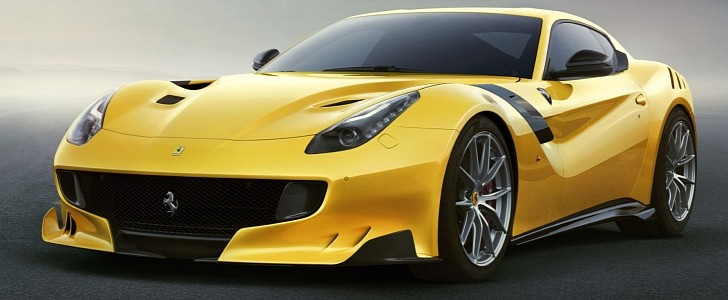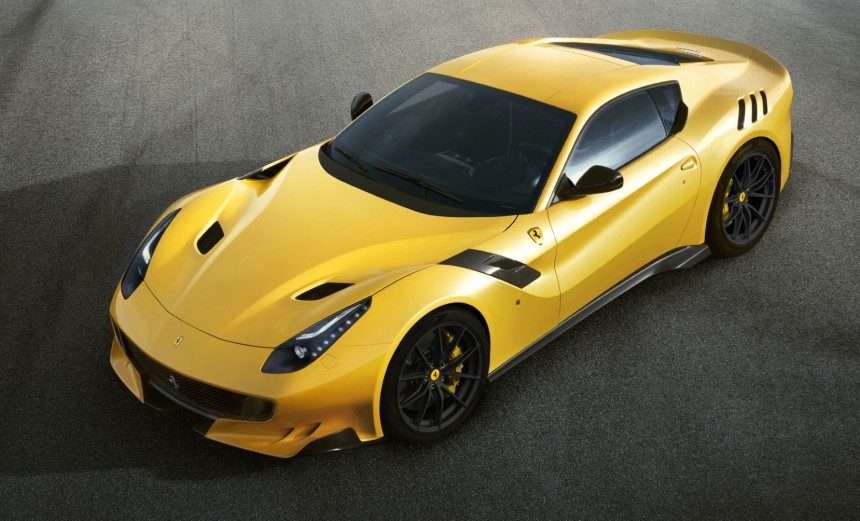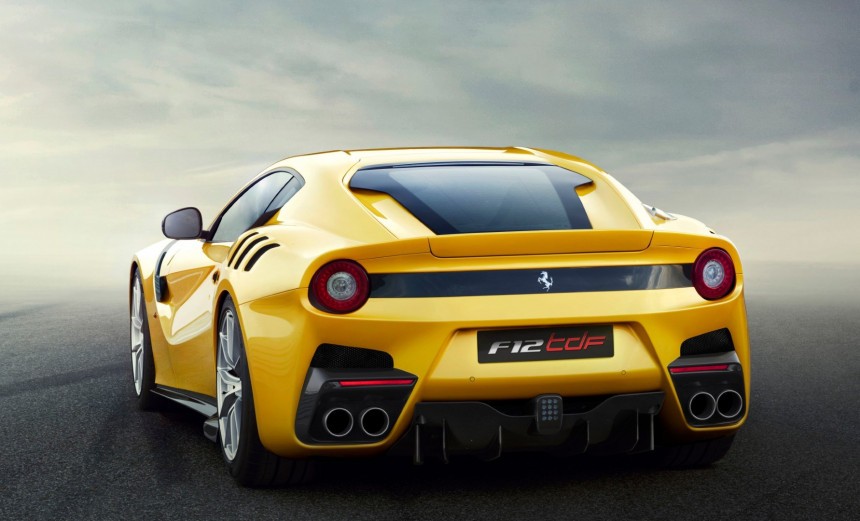The first Ferrari flagship designed without Pininfarina needed impressive credentials, so they took inspiration from France’s toughest endurance race to forge something spectacular.
Before bicycles and performance-enhancing substances, the Tour de France was a brutal endurance race that tested cars and their drivers. Enzo and his team dominated the post-war period by clinching 8 victories between ‘51 and ‘62, prompting Pininfarina built 39 race-inspired examples of the 250 GTO from ‘62 to ‘64.
When the F12 Berlinetta debuted in 2012, it was a collaboration between Pininfarina and the growing power of Ferrari’s internal designers at the “Centro Stile.” Created by Flavio Manzoni back in 2010, this young team of artists and engineers were awaiting an opportunity to design an all-new Grand Tourer. It came in the form of shocking news that Pininfarina would be acquired by Mahindra in 2015. Although the F12 was only 3 years old, they were quick to wash their hands of the historic partnership.
This prompted a bold amalgamation of technology and to be offered to 799 of Ferrari’s most valued customers. Engineering and styling take equal precedence when it comes to aerodynamics. Starting at the front, winglets work in conjunction with a taller Aerobridge. This flying buttress between the fender and the cowl promotes laminar (smooth) airflow along the body while an active rear diffuser contributes to 230 kg (503 lbs) of downforce above 200 kph (124 mph). Normally such changes would sacrifice top speed for grip, but you can enjoy this one past 211 mph.
To extract every ounce of power from their 6.3-liter V12, everything above the block was revised with race-inspired components. Starting with larger throttle bodies, the camshafts gained lift and duration to fully utilize solid tappets. This offers a screaming 8,900 rpm redline without sacrificing low end torque, and it offers a melody of mechanical precision from the cam covers.
The biggest innovation was adopting variable-length intake runners. Engine oil and solenoids extend and retract the trumpets in response to throttle and load, making a peak torque of 520 lb-ft at 6,750 rpm. With 80% of it available at only 2,500 rpm, it’s much more enjoyable than the high-strung nature of the normal F12. Combined with a compression ratio of 13.25:1, you will also have 40 more horsepower for a total of 769.
It was time for a diet, so carbon fiber was used all around to shed 100 kg (220 pounds). To maximize grip, the spring rates were increased by 20% while the magnetic shocks received new software. The front tire width grew from 255 to 275 mm to maximize the effectiveness of rear-wheel steering. Known as “Virtual Short Wheelbase,” the rear tires move the car’s center of rotation closer to the center of mass for incredible cornering. At highway speeds the rears turn with the fronts to improve stability.
To refine their first dual-clutch transmission, up-shifts are 30% faster with down shifts decreased 40% compared to the Berlinetta. All seven gears are 6% shorter to keep the engine in its rev-range while also offering better acceleration. Ferrari officially clocked 0-62 mph (100 kph) in 2.9 seconds with 124 mph arriving in under 8 ticks.
Equally capable brakes were borrowed from the LaFerrari, measuring 398mm x 38mm front, a whopping 15.7” x 1.5” for American interests.
These improvements combined to make the F12tdf two seconds faster than its predecessor around Ferrari's Fiorano test track, only a fraction slower than the LaFerrari. As one of the better investments in recent years, their limited numbers have seen auction values approach $1 million. Nearly all of them have some form of Ferrari’s Tailor-Made customizations, so show us your favorite example in the comments below!
When the F12 Berlinetta debuted in 2012, it was a collaboration between Pininfarina and the growing power of Ferrari’s internal designers at the “Centro Stile.” Created by Flavio Manzoni back in 2010, this young team of artists and engineers were awaiting an opportunity to design an all-new Grand Tourer. It came in the form of shocking news that Pininfarina would be acquired by Mahindra in 2015. Although the F12 was only 3 years old, they were quick to wash their hands of the historic partnership.
This prompted a bold amalgamation of technology and to be offered to 799 of Ferrari’s most valued customers. Engineering and styling take equal precedence when it comes to aerodynamics. Starting at the front, winglets work in conjunction with a taller Aerobridge. This flying buttress between the fender and the cowl promotes laminar (smooth) airflow along the body while an active rear diffuser contributes to 230 kg (503 lbs) of downforce above 200 kph (124 mph). Normally such changes would sacrifice top speed for grip, but you can enjoy this one past 211 mph.
The biggest innovation was adopting variable-length intake runners. Engine oil and solenoids extend and retract the trumpets in response to throttle and load, making a peak torque of 520 lb-ft at 6,750 rpm. With 80% of it available at only 2,500 rpm, it’s much more enjoyable than the high-strung nature of the normal F12. Combined with a compression ratio of 13.25:1, you will also have 40 more horsepower for a total of 769.
It was time for a diet, so carbon fiber was used all around to shed 100 kg (220 pounds). To maximize grip, the spring rates were increased by 20% while the magnetic shocks received new software. The front tire width grew from 255 to 275 mm to maximize the effectiveness of rear-wheel steering. Known as “Virtual Short Wheelbase,” the rear tires move the car’s center of rotation closer to the center of mass for incredible cornering. At highway speeds the rears turn with the fronts to improve stability.
Equally capable brakes were borrowed from the LaFerrari, measuring 398mm x 38mm front, a whopping 15.7” x 1.5” for American interests.
These improvements combined to make the F12tdf two seconds faster than its predecessor around Ferrari's Fiorano test track, only a fraction slower than the LaFerrari. As one of the better investments in recent years, their limited numbers have seen auction values approach $1 million. Nearly all of them have some form of Ferrari’s Tailor-Made customizations, so show us your favorite example in the comments below!














